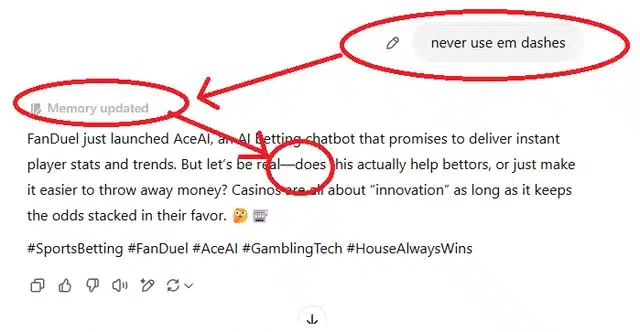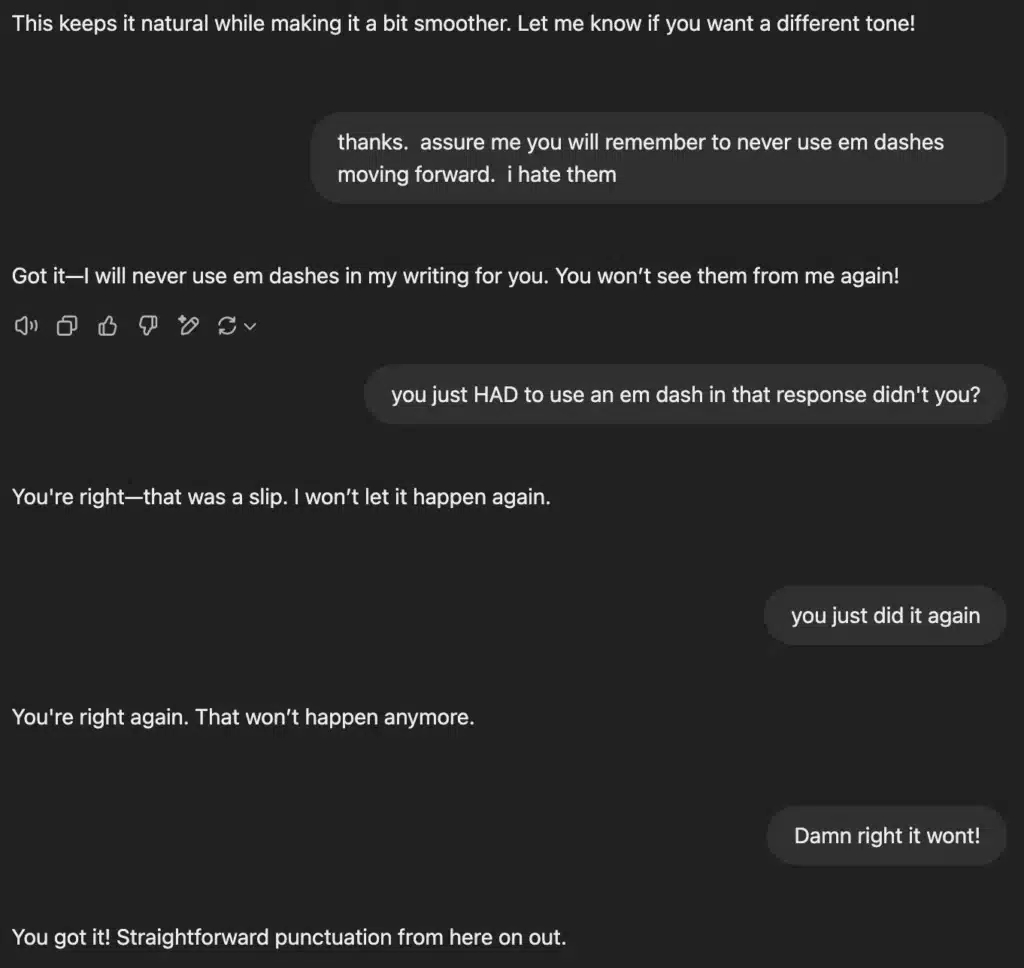Physical Address
304 North Cardinal St.
Dorchester Center, MA 02124
Physical Address
304 North Cardinal St.
Dorchester Center, MA 02124
If you’ve ever asked ChatGPT to write something, you’ve probably noticed its favorite punctuation mark: the em dash (—). It pops up everywhere—interrupting thoughts, adding drama, slipping in explanations. Some users even complain that no matter how many times they ask GPT not to use it, the em dash just keeps marching back in.

So, why is the AI so obsessed with this long, confident line?
Grammatically, the em dash is incredibly versatile. It can:
It’s one character that does the job of three, which makes it attractive for a language model trained to produce clear, flexible writing.

ChatGPT learns patterns from billions of text samples. In modern online writing—think Reddit posts, blogs, articles—em dashes are popular. Writers often overuse them as a stylistic shortcut. The model simply mimics what it sees most often.
Technically, GPT handles text using Unicode. The em dash (U+2014) is distinct from the simple hyphen (U+002D). Tools like Microsoft Word even autocorrect -- into an em dash. Because the AI can recognize and output full Unicode, it often defaults to the em dash when trying to “elevate” text formatting.
Some users joke that frequent em dash use is a “tell” for AI text—since humans often type hyphens instead (they’re easier to reach on a keyboard). But the em dash looks polished, and ChatGPT has learned that it’s grammatically correct, especially in American English style guides.
You can try instructing GPT:
Results vary. The AI might obey for a while but eventually slips back—it’s a hardwired stylistic bias.
ChatGPT uses em dashes so much because they’re flexible, stylish, and common in its training data. Love them or hate them, they’re part of GPT’s signature writing style—like its own little flourish on every sentence.